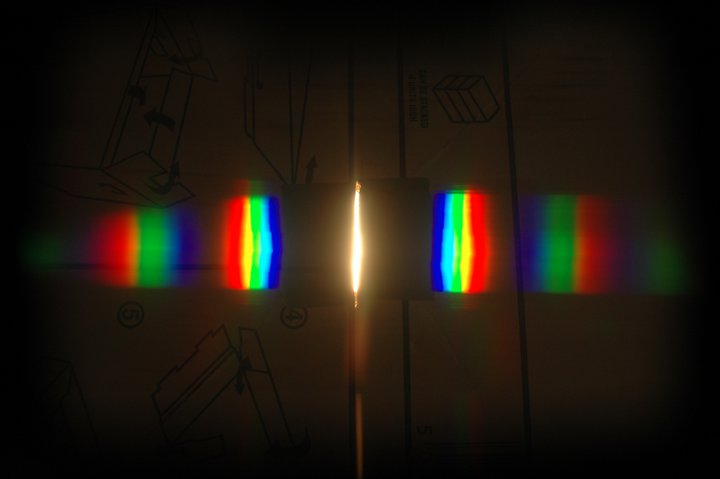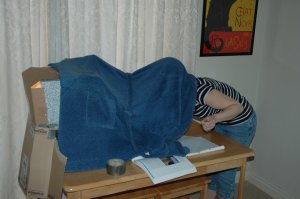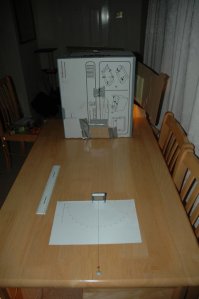 I am no longer afraid of moles! No, not the little furry buggers that make a mess of your lawn. The once-frightening, but now benign, number used in chemistry so that your head doesn't explode due to excess zeros.
I am no longer afraid of moles! No, not the little furry buggers that make a mess of your lawn. The once-frightening, but now benign, number used in chemistry so that your head doesn't explode due to excess zeros.
A mole - also known as Avogadro's number - is 6.02 x 10²³ "things". So, one mole of oxygen atoms contains 6.02 x 10²³ atoms. That's quite a large number. So large, that most people can't get their heads around it.
Here's an analogy: one mole of marshmallows would cover the United States of America to a depth of around 6,500 miles*. That is a LOT of marshmallows.
One mole of moles (the little furry buggers this time) would, if placed end-to-end, stretch 11 million light years, and weigh almost as much as the moon.*
Water flows over Niagara Falls at about 650,000 kL (172,500,000 gallons) per minute. At this rate it would take 134,000 years for one mole of water drops (6.02 x 1023 drops) to flow over Niagara Falls.*
Anyway, enough analogies. Suffice it to say, it's a remarkably large number. Far too large to do anything practical with. So, chemists use the mole as a form of shorthand. At school, I hated chemistry specifically because of moles; I just couldn't get my head around it.
So it was with a sense of trepidation that I approached Book 4: The Right Chemistry.
My fears, however, were unfounded. I'm really, really, enjoying this book! The maths tackled so far has really helped to beat back the terrors of Very Large Numbers, and the book is great at explaining difficult concepts in simple terms.
I do think it helps that I am reading We Need to Talk About Kelvin when I'm not studying. This, too, is a cracking book that manages to explain extremely complicated ideas in layman's terms. Doing a bit of reading around the subject definitely helps to seal ideas into your mind, and allows them to take hold.
Anyway - I digress. I was talking about the mole, and its eternal usefulness.
 One mole of any substance contains 6.02 x 10²³ atoms, molecules or ions (whichever is most appropriate) of that substance. So, one mole of marshmallows contains 6.02 x 10²³ marshmallows; one mole of water contains 6.02 x 10²³ water molecules; one mole of mercury contains 6.02 x 10²³ mercury atoms.
One mole of any substance contains 6.02 x 10²³ atoms, molecules or ions (whichever is most appropriate) of that substance. So, one mole of marshmallows contains 6.02 x 10²³ marshmallows; one mole of water contains 6.02 x 10²³ water molecules; one mole of mercury contains 6.02 x 10²³ mercury atoms.
And, one mole of any substance has a mass equal to the relative mass of that substance, expressed in grams. So one mole of oxygen atoms has a mass of 16.0 g; one mole of oxygen molecules (it's a diatomic molecule, see) has a mass of 32.0 g. With me?
The Avogadro hypothesis (named after Amadeo Avogadro, an Italian physicist who died in 1856) asserts that this is true. Actually, it asserts that equal volumes of different gases, at the same temperature and pressure, contain equal numbers of molecules. Which is beautifully simple, and has the far-reaching consequences I mentioned above.
It enables the mass of any given substance to be translated directly into numbers of molecules (or atoms) using the Avogadro constant: the mole.
Thus: the number of moles of a substance is equal to the mass of that substance divided by the molar mass of the substance.
E.g. How many moles are in 52 g of water? Well, the molar mass of water is (2 x 1.01) + 16.0 = 18.02 g mol‾¹
So the number of moles in the water = 52 g divided by 18.02 g mol‾¹ = 2.89 mol (3 significant figures). There are 2.89 moles of water molecules in 52 g of water.
Simples!
And the scariest thing? I'm quite enjoying it all! Next, I shall enthuse about covalent bonds. They are this: aces.
*I can't claim the credit for these analogies. They came from a rather cool chemistry site.









